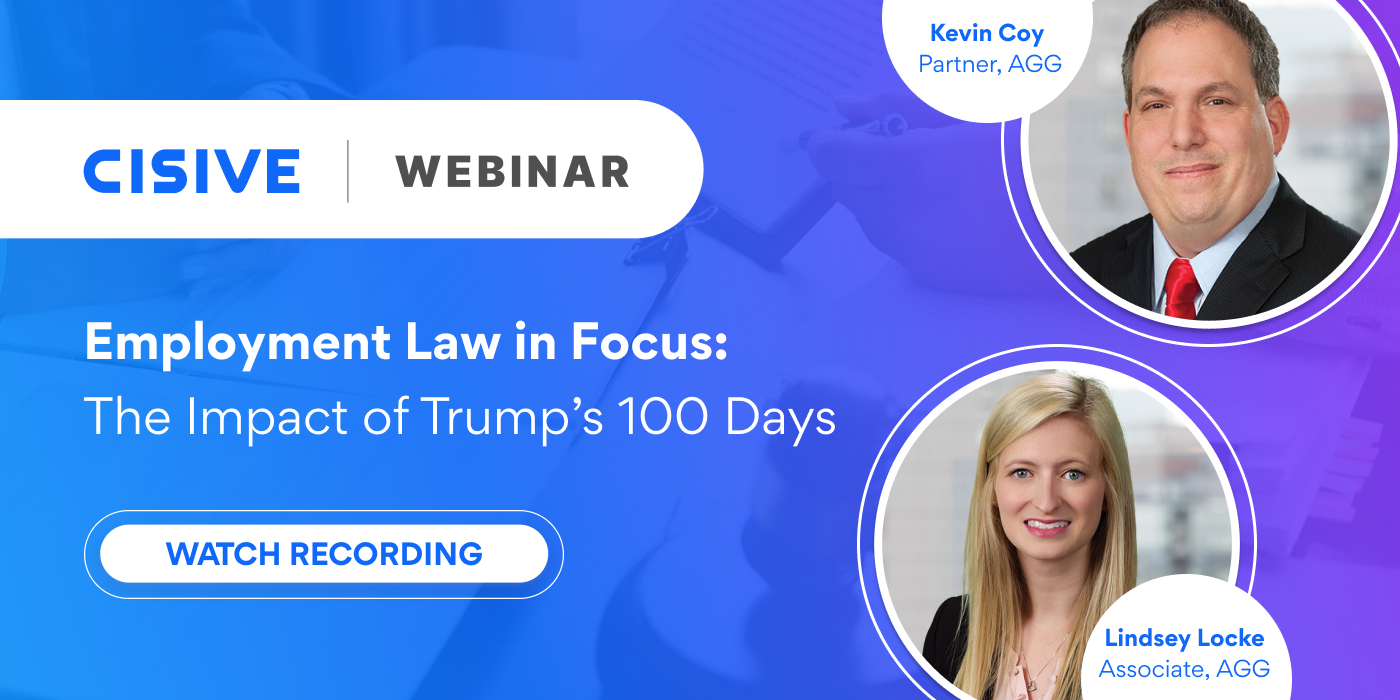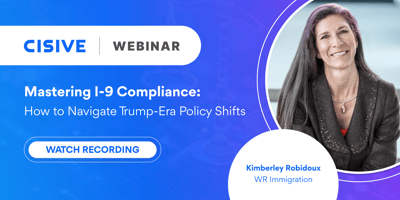

As U.S. immigration enforcement intensifies under new executive orders, I-9 compliance has taken...

As the first 100 days of President Trump’s second term have come to a close, many employers are watching closely for signals about what’s ahead in the regulatory landscape. In our recent webinar cohosted with Arnall Golden Gregory (AGG), attorneys Kevin Coy and Lindsey Locke provided an overview of what these early policy shifts mean for employers, especially human resources, compliance, and legal teams. Here are the key takeaways from the session.
This webinar recap should not be construed as legal advice. Consult with your legal counsel when reviewing related policies at your organization.
The Pregnant Workers Fairness Act, effective since June 2023, continues to be shaped by ongoing litigation. The Equal Employment Opportunity Commission’s (EEOC) final rule interpreting the law expanded employer obligations, allowing accommodations even when pregnant employees are temporarily unable to perform essential job functions.
Legal challenges—primarily regarding abortion and fertility-related accommodations—have led to mixed court rulings and partial injunctions. However, President Trump has recently dismissed several EEOC commissioners and those dismissals are legally contested. Locke noted that “the EEOC does not currently have a quorum, so they cannot currently take any action to either rescind or modify this final rule.”
Employers should continue monitoring court developments and be prepared to revisit accommodation procedures.
DEI initiatives are under new federal scrutiny. Executive Order (EO) 14173, titled Ending Illegal Discrimination and Restoring Merit-Based Opportunity, requires federal agencies to identify and combat what the administration sees as unlawful DEI-related preferences.
The order mandates:
In addition to the EO, the EEOC and Department of Justice (DOJ) issued technical guidance addressing “unlawful discrimination related to ‘diversity, equity, and inclusion’ in the workplace” that reinforces race- and gender-neutral employment practices.
Coy advised, “Simply changing the names of the initiatives will not be sufficient, but rather, they’ll look at the substance of the underlying programs.” Employers are encouraged to audit their DEI initiatives for compliance.
President Trump’s recent Executive Order 14281 relates to disparate impact, a long-standing element of civil rights law. It:
While the order does not abolish private disparate impact claims, employers should expect fewer federal enforcement actions in this area.
Several recent and pending Supreme Court cases could reshape employment law:
Each of these cases reflects a broader legal rebalancing that could impact hiring, termination, and litigation risk.
Worksite enforcement is expected to ramp up significantly. Executive orders have:
Locke noted that certain industries may face greater scrutiny, such as “construction, hospitality, manufacturing and food processing, agriculture, and critical infrastructure industries which include things like transportation.”
Three major areas are evolving:
While some of these proposals remain in early stages or may face delays, employers should continue monitoring regulatory activity closely. Each of these developments carries potential compliance implications—particularly for organizations handling sensitive employment data or conducting background checks.
Across the board, the first 100 days have introduced sharp changes in tone, enforcement strategy, and policy direction. From DEI and civil rights enforcement to privacy rules and immigration audits, federal agencies are moving quickly to reshape the regulatory framework affecting employers.
With several executive orders in play, ongoing litigation, and unresolved agency vacancies, the coming months are likely to bring more change. Employers should:
Taken together, these developments signal a broad shift in how employment law may be interpreted and enforced in the coming months. Now is the time for employers to assess their compliance strategies and make proactive updates where needed.
As a leader in background screening and workforce compliance, Cisive is here to help you navigate complex requirements. Connect with one of our screening experts today.
Author: Jenni Gallaway
Bio: Content Marketing Manager at Cisive. 8 years of experience in the background screening industry.
Let's Connect on LinkedIn
As U.S. immigration enforcement intensifies under new executive orders, I-9 compliance has taken...

Each year during National Nurses Week, we take time to recognize the extraordinary professionals...

In transportation, there are four reports that most employers will request when reviewing...